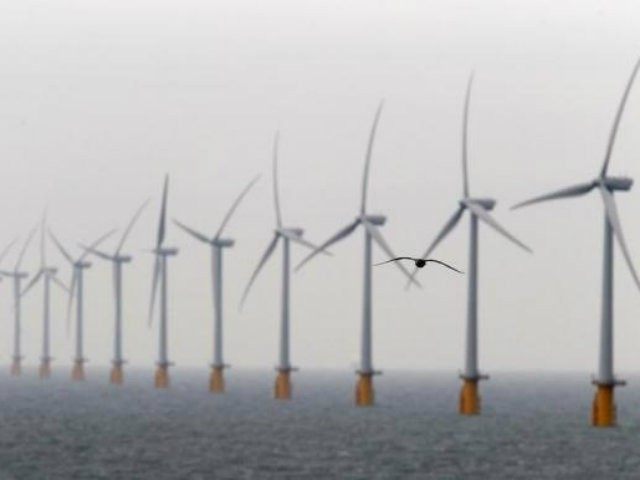As Britain shivers under a blanket of snow and ice, it has emerged that offshore windfarms have been idling to prevent icing up – and drawing electricity off the national grid to do so. Critics have pointed out the “folly” of having windfarms idle in a cold snap, but industry experts insist that all forms of power generation involve some electrical input.
The issue has been raised by Brian Christley, a resident of Abergele, Wales, who wrote to the Daily Telegraph to say: “Over the weekend just gone, the coldest of the year so far, all 100-plus off-shore wind turbines along the North Wales coast were idling very slowly, all using grid power for de-icing and to power their hydraulic systems that keep the blades facing in the same direction.
“Thanks to Ed Davey, the Energy and Climate Change Secretary, we will be subsidising these follies for the next 30 years. And then, if we continue to vote for technically naive green politicians, for further periods after that.”
The energy firm which owns the 30 turbines off the North Wales coastline has countered that, on the days in question, the turbines were actually a net contributor to the grid. A spokesman said: “Our turbines were not idling but generating electricity during each of the days in question, contributing a positive balance of energy into the grid. All energy generators use a small amount of electricity to keep their systems running smoothly, in the case of wind farms drawing power from either an adjacent operating turbine or the grid.”
John Constable, of the Renewable Energy Foundation, a charity which promotes sustainable development through the use of renewable energies, said: “We know that in Denmark there are days when their wind farms are net consumers of electricity, so in some ways this is not surprising. It’s another example of how wind power is difficult and expensive to manage.”
Theoretically, Britain’s wind farms, both onshore and off, have a combined capacity of 12.1GW, enough to power 8.8 million homes. However, a report published last October by the Scientific Alliance and the Adam Smith Institute found that the chance of all Britain’s windfarms running at full capacity together was “vanishingly small”, meaning that actual output is often far lower. Rather, they found that the average output was just eight percent of the headline figure.
Moreover, they can only produce energy if the wind is blowing at between 10 and 50 mph, above which they automatically shut down to prevent damage. And in freezing conditions they must draw on the energy grid to rotate their blades slowly to prevent them icing, and to power the system which turns the blades into the wind. It also costs about twice as much to produce offshore wind energy as it does to produce traditional coal fired energy.
Roger Helmer, energy spokesman for the UK Independence Party, who want to see wind farm subsidies scrapped, told Breitbart London: “We’re familiar with the layers of subsidy necessary to make wind farms viable. We’re familiar with the inefficiency of the necessary back-up fossil fuel generation, for when the wind doesn’t blow. Now we learn that on windless days these wind turbines are cannibalising power from the grid merely to help maintain them. Will the folly never stop?”

COMMENTS
Please let us know if you're having issues with commenting.